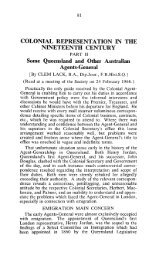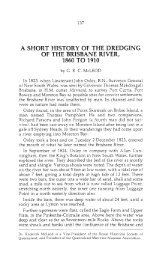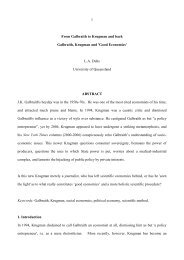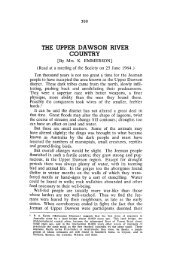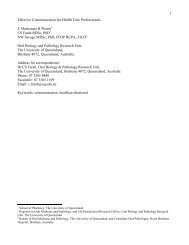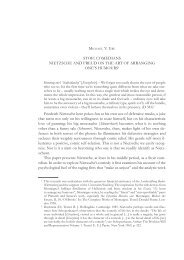907 FRAGMENTS OF LEGAL HISTORY IN ... - UQ eSpace
907 FRAGMENTS OF LEGAL HISTORY IN ... - UQ eSpace
907 FRAGMENTS OF LEGAL HISTORY IN ... - UQ eSpace
Create successful ePaper yourself
Turn your PDF publications into a flip-book with our unique Google optimized e-Paper software.
913<br />
agreed to pay £260 per annum in equal monthly instalments<br />
as rental. Mr. D. F. Roberts was Solicitor for<br />
Dr. Bell. One can regret that the Government did not<br />
immediately acquire the freehold of this excellent<br />
building site. When Chief Justice McCawley was Crown<br />
Solicitor in 1910-1917, he discovered that a Deed of<br />
Grant had not been issued for the two acres of land<br />
upon which the imposing Treasury Building stands.<br />
The early records showed the area to be technically<br />
known as "waste land" in the occupation of the Military.<br />
Mr. McCawley had the defect remedied by the<br />
issue of the necessary deed. A similar position arose<br />
regarding the Sydney Conservatorium of Music — a<br />
former Government House on the Sydney Domain.<br />
The Registrar-General's report of the first Census,<br />
dated August 22, 1861, states:<br />
"Only one person in the whole Colony refused to<br />
supply the required information; but as it happens<br />
he is registered in the Office as a Minister of Religion<br />
qualified to celebrate marriages. Therefore, the<br />
information he refused to give was easily supplied,<br />
and I did not think it was necessary nor expedient to<br />
gratify his desire for notoriety, and to raise him to<br />
the rank of a martyr by enforcing payment of the<br />
legal penalties to which he had rendered himself<br />
liable. It certainly does excite some surprise that a<br />
Minister of Religion should have been so silly."<br />
The Report pays a tribute to Census Collectors—<br />
stressing the fact that the area covered—Brisbane to<br />
the Upper Leichhardt and the Kennedy, Taroom and<br />
Maranoa districts—had no roads and the bush was<br />
intersected by dangerous swamps and treacherous<br />
creeks with unpropitious weather and torrents of rain<br />
falling for weeks before and after April 8, 1861. The<br />
Census Collectors next week will not have these difficulties<br />
to contend against.<br />
"In 1860" (says the Editor of Our First Half<br />
Century 1859-1909) "there was not a mile of railway<br />
either open for traffic or under construction, not a<br />
mile of electric telegraph wire, nor, save between<br />
Brisbane and Ipswich, was there a formed or metalled<br />
road, the only avenues of transport being along<br />
the bridle path or the teamster's track. The country<br />
was destitute of culverts and bridges over watercourses,<br />
and the so-called roads were impassable for







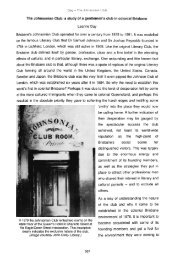

![Kanaka Labour in Queensland, [ises-mi] - UQ eSpace](https://img.yumpu.com/21925421/1/163x260/kanaka-labour-in-queensland-ises-mi-uq-espace.jpg?quality=85)
